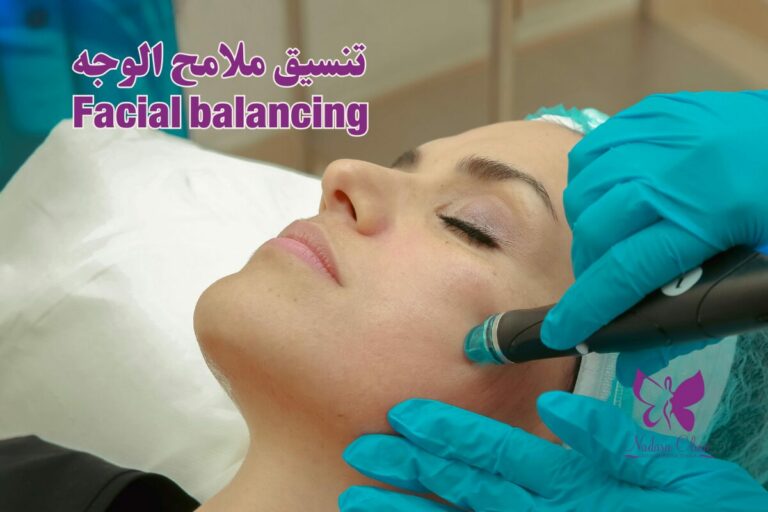Lightening and rejuvenate the intimate area is just as important as your appearance.
Many women may be concerned about the color of the vagina and the areas around it, but at the nadara Center for Dermatology, Cosmetic and Laser in Hurghada, all these concerns are resolved.
Dermatologists will help you choose the best treatments that contribute to lightening and supplying the sensitive area in all safety.
Reasons for pigmentation of the sensitive area
The intimate area is often darker in color than the rest of your body, and the vagina is a very sensitive part of the female body.
Although a darker color of the vagina does not indicate any serious health problems, darker skin may be due to:
increased friction
Daily activities such as walking, exercising or rubbing the area a lot can cause the vagina and the area around it to darken.
Wearing tight clothing and not ventilating the sensitive area increases moisture between the thighs and the vagina, which creates friction.
This can lead to some type of skin infection called keratinization, a process in which keratinocytes produce more keratin.
It occurs as these cells move upward in the upper layer of the skin, increasing the pigmentation of the skin in the sensitive area.
Aging and aging
The vagina undergoes many changes in size, shape, and color, and the color varies from light pink to dark brown.
This area becomes thinner and appears darker because the fatty tissue in it becomes thinner.
Change in levels of sex hormones
The level of hormones in the body, especially estrogen, changes during puberty.
It may also cause pigmentation through increased production of melanin which may lead to the appearance of black spots.
Polycystic ovary syndrome
The affected women suffer from an overgrowth of dark spots around the vagina due to the increased production of androgens, which causes a change in the texture and color of the vagina.
Traditional hair removal
Old-fashioned hair removal methods such as plucking, waxing, or creams can cause the skin to darken.
These methods also exfoliate the top layer of the skin, making it more sensitive.
Diabetes
The skin may turn black and thick near the skin folds, especially in sensitive areas.
Therefore, excess sugar consumption should be avoided as diabetes can cause darkening of the skin.
Other causes of darkening of the intimate area include:
- Bad eating habits.
- Smoking.
- obesity;
- Some genetic factors.
Ways to protect the sensitive area from pigmentations
Maintaining the pH balance of the skin
Restoring the delicate pH balance helps lighten and supply the sensitive area, and this occurs through the following:
- Avoid using scented soaps.
- You can take probiotic supplements.
- Change tampons regularly.
Keeping the vagina clean
Keep the intimate area clean and use an appropriate lotion or scrub to reduce itching that causes a darkening of the skin.
You can wear loose-fitting cotton clothing and ventilate the area well, and change it right after you finish exercising.
A diet rich in vitamin C also helps in lightening and rejuvenate the intimate area.
You can also read : Bikini laser hair removal | All you need to know about this procedure.
Lightening creams for sensitive area
Dear woman, the skin doctor at the Nadara clinic for Dermatology, Cosmetic and Laser r in Hurghada may describe some types of creams to lighten the vagina.
These creams include those containing kojic acid and niacin, as these ingredients specifically reduce post-inflammatory hyperpigmentation caused by waxing.
It also contributes to the regeneration of skin cells, which provides a fresh complexion and reduces skin damage.
Use products that contain natural ingredients, and avoid vaginal lightening creams that contain chemicals as they may:
- Genital irritation, so check your vaginal pH (3.8-4.5) to be normal.
- Increased possibility of infection in the genitals.
- Having an unpleasant odor.
- Vaginal swelling.
- loss of sensation
You can also read : Laser vaginal tightening.
Chemical peeling to lighten and rejuvenate the sensitive area
One of the common methods of whitening and lightening the vagina and surrounding area is chemical peeling, and it is a non-toxic acidic chemical.
This substance is placed on the skin, to stimulate the upper layers of the skin to exfoliate and rejuvenate, and this results in lightening the treated genital skin.
A dermatologist begins by applying a preparation cream that consists of a group of products that help prepare your skin for chemicals.
There are 3 types of peeling: light, medium and deep depending on the number of layers the chemical can enter.
Superficial peeling
Alpha hydroxy acids are used and only penetrate the outer layer of the skin.
Medium peel
Trichloroacetic or glycolic acid is used to reach the dermis (the middle layer of the skin), and this makes it more effective at lightening the sensitive area.
Deep peeling
It completely penetrates the middle layer to remove damaged cells, exfoliants are often used phenol or trichloroacetic acid.
You may have to do this procedure for 6 to 8 weeks before a chemical peel. There are some instructions to follow:
- Avoid peeling during menstruation.
- Waxing should be done about 3 days before the procedure and not after, as it does not irritate the skin.
- Do not use any type of topical medication such as retinol or retin-A for at least 48 hours.
- If your esthetician prescribes a sedative , take it as directed.
1 to 3 coats of the peeling solution can be applied depending on your tolerance for the chemical.
If the peeling is superficial, it can be repeated every short period of 3 to 5 weeks, while if it is medium, it is recommended every 3 months at least.
The skin may look a little red after the sessions, so it is necessary to apply moisturizing creams to protect the skin.
You may feel tingling, burning, or slight swelling, but these effects go away within a few days.
Use cold compresses on the treated area for 20 minutes at a time after the sessions, and do not use any perfumed products or soaps for two days.
Avoid using saunas or saunas, as well as very hot water, you can replace it with cold water.
You can also read : Sensitive area care.
Lightening and rejuvenate the sensitive area with laser
The goal of using a laser in the vaginal area is to permanently and completely remove dark-colored tissues.
The procedure may take 20 to 30 minutes, and local anesthesia can be used to reduce any pain.
A single session achieves up to 30-40% lightening and plumping sensitive area so you can have additional sessions to achieve full results.
The existing layer of melanin can be removed and thus the source of unwanted coloration is treated.
The laser can be applied to the outer lip in the same session and the visible tissues will be healthier with a bright pink or light color.
Your dermatologist will ask you to apply an antibiotic cream and a moisturizing cream daily for the first five days after the sessions.
A moisturizing cream helps prevent skin drying and reduce infection.
Expect the genital skin to peel slightly after about 1-2 weeks of laser treatment, and this peeling is what removes superficial dark skin.
The number of sessions you need varies according to the degree of pigmentations.but it is usually at least 6 sessions.
You can wait up to 3 weeks for your next session for the top layer of skin to regenerate.
It is also recommended that the first sexual intercourse take place about 3-4 days after the session.
In conclusion, you can contact the dermatologist at the nadara Center for Dermatology, Cosmetic and Laser in Hurghada to choose the appropriate technique for lightening and rejuvenate the sensitive area.






